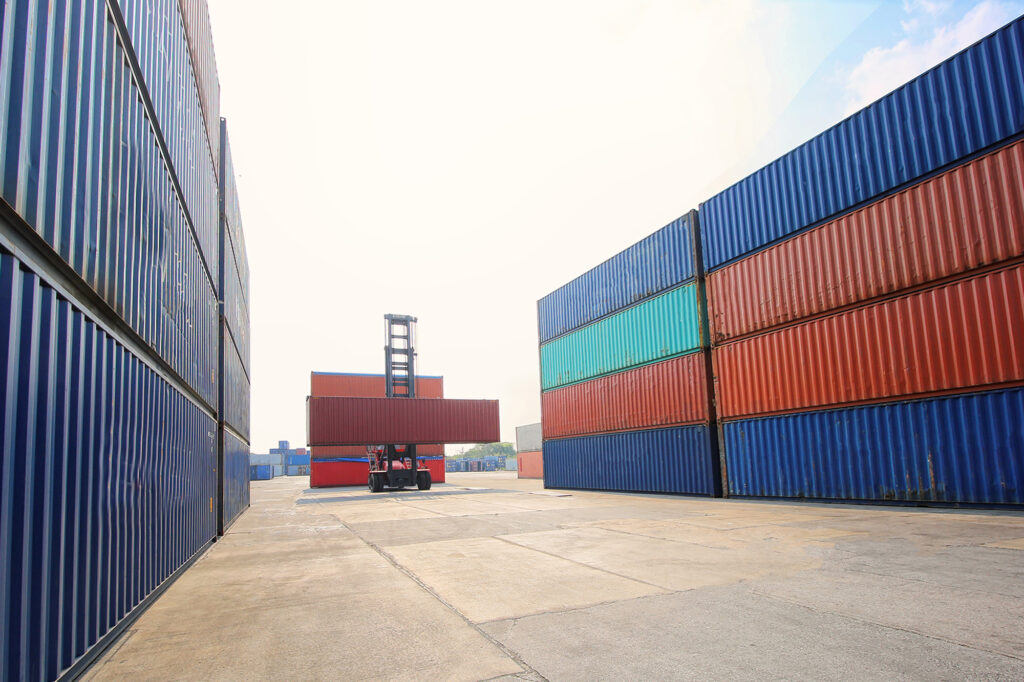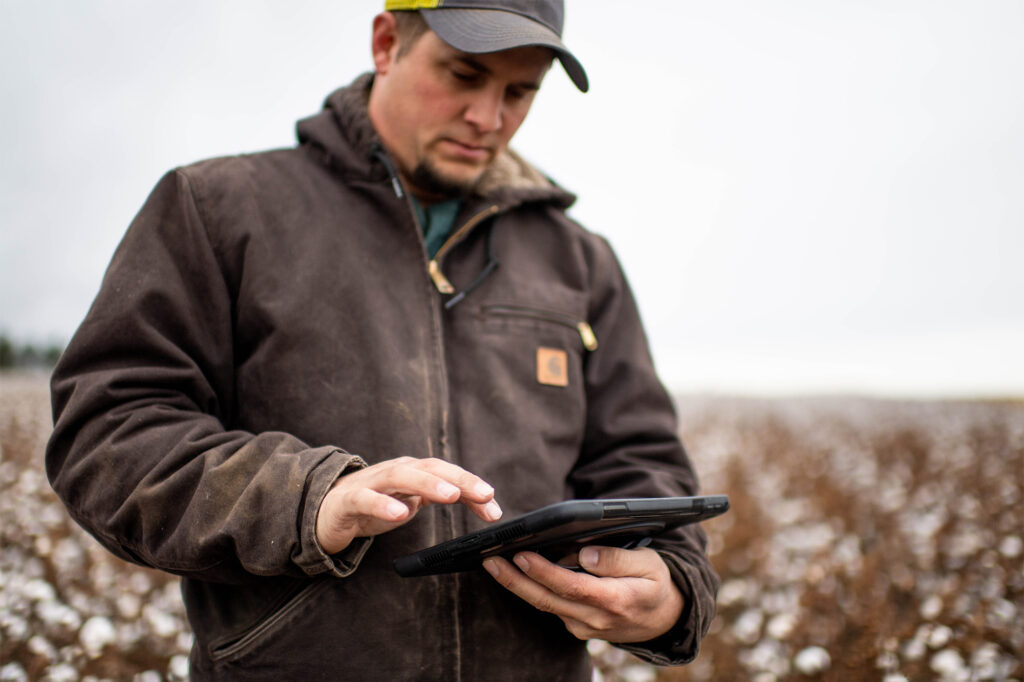Terrain analysts dissect news topics important to agriculture and weigh their significance for the sectors relevant to our Farm Credit customers.
In this issue, our analysts discuss trade tensions, the decline of agtech startups, and forage crop insurance.

The proposed tit-for-tat tariffs highlight a growing tension between China and Western countries other than the U.S.
China Trade Tensions Heat Up
Matt Clark, Senior Rural Economy Analyst
Overview: The European Union has proposed heavy duties on imports of Chinese electric vehicles. The proposal received quick admonishment from Chinese officials, who warned of another trade war and began an investigation into potential “pork dumping” by the EU.
Notable Quotes:
“Chinese automakers urged Beijing to hike tariffs on imported European gasoline-powered cars and the government launched a dumping probe into EU pork imports in retaliation for the EU Commission's move.”
— “China Warns of Possible ‘Trade War’ With EU,” a June 21, 2024, Reuters article
Takeaway: This issue may be de-escalated through diplomatic means. However, the proposed tit-for-tat tariffs highlight a growing tension between China and Western countries other than the U.S. This particular instance may have some benefits for the U.S. pork industry, but in the bigger picture we are likely to see similar flash points as China deepens its ties with fellow BRICS+ members Brazil, Russia, India, South Africa, Egypt, Ethiopia, Iran and the UAE.
Sector Impacts:
- Fruit, Nuts & Vegetables: In 2018, nut producers in California entered a similar conflict with China, Turkey and India when the U.S. first applied tariffs on those countries. With recent tariffs implemented on a variety of imported goods from China, many in the industry wonder if more retaliation is coming.
- Grain: The U.S. too has trade tensions building with China. A “cold” trade war could already be taking place, with China purchasing soybeans from the U.S. at a significantly slower pace compared with historical norms. If this continues, there will be downside risk on soybean future prices.
- Beef & Pork: The anti-dumping investigation into EU pork products may provide a near-term opportunity for U.S. red meat producers. However, it should also be viewed as a significant, long-term risk to U.S. pork and beef exports to China, as it could lead to further development of highly competitive low-cost Brazilian production infrastructure.
- Dairy: China is the world’s largest dairy importer. It imports significant amounts of whey powder to use in pig feed. The two major global sources of whey powder are the two main cheese-making regions of the world: the U.S. and the EU. If China begins limiting imports from the EU, including dairy products like whey, it may need to increase purchases from the U.S., helping to lift milk prices in the U.S. in the short term.
- Grapes & Wine: U.S. wine trade flows with China and its fellow BRICS+ members are relatively modest. The reinstitution of U.S. tariffs on European wines that were suspended in 2021 would have more far-reaching impacts.

Many startups that once had potential have seen valuations drop or have gone out of business altogether.
Farm Startups Are Stumbling
Matt Woolf, Ph.D., Specialty Crop Analyst
Overview: The agriculture technology, or agtech, sector has long faced challenges in reaching farmers. Those challenges have mounted in recent years, with interest rates higher and farm income lower. Now, many startups that once had potential have seen valuations drop or have gone out of business altogether.
Notable Quotes:
“Indigo Ag Inc., once a marketplace for trading and shipping grain, has cut jobs and shrunk its business. Farmers Edge Inc. was taken private at a tiny fraction of its initial public offering. Gro Intelligence, named by Time magazine as one of the 100 Most Influential Companies, is shutting down, according to a person familiar with the matter.”
“‘How many farmers do you see?’ Matt Carstens, chief executive officer of Landus, Iowa’s biggest farm cooperative, asked during a presentation at World Agri-Tech Innovation Summit in San Francisco in March. ‘We’re all talking to ourselves. That’s cool. But somebody’s got to execute it on a farm.’”
— “Farm Startups Bent on Shaking Up Cargill, ADM Are Stumbling,” a June 12, 2024, Bloomberg article
Takeaway: Many agtech firms are adjusting their business models and cutting staff. In the short run, this could mean Farm Credit farmers find agtech products more expensive and more difficult to maintain. In the long run, the slowdown in the agtech sector could hinder the adoption of technologies like the automated spray rig and the robotic harvester, especially in specialty crops, which could restrict farmers’ productivity.
Sector Impacts:
- Fruit, Nuts & Vegetables: The intensive nature of specialty crop production has led many California producers to have high hopes for automation, particularly in light of recent labor shortages. With the agtech sector encountering challenges, however, the adoption of many of these technologies may be further away than many had expected.
- Grain: While technology enhancements can certainly benefit farm operations, especially in markets where labor is a challenge, they still must provide the operation a payback to justify the upfront costs. A slowdown in agtech startups allows for maturity of the industry and naturally sorts the wheat from the chaff.
- Beef & Pork: The areas of the livestock industry with the highest potential ROI of most agtech adoptions are pork, poultry, and the feeding segments of the beef supply chain. Those operations have also been plagued with negative margins or margins that are headed that way. Agtech adoption at a scalable level will continue to struggle.
- Dairy: Like other sectors, dairy has been approached by a wave of startups attempting to solve problems on farms with limited applicability to the diverse dairy production sector. This recent shake-up may help the industry sift through some of the excess and provide opportunities for companies that already work closely with producers to acquire the tech that would be most useful.
- Grapes & Wine: Given depressed grape prices and rising labor costs, California grape growers have been exploring and implementing technology-based solutions as a means of reducing farming costs and maintaining operating margins. An increase in the cost or availability of agtech products could hinder this effort.

Grazing land and forage producers are extended a revenue safety net.
Offsetting Drought Risk With Crop Insurance
Dave Weaber, Senior Animal Protein Analyst
Overview: Farmers have historically used the Federal Crop Insurance Program (FCIP) to manage revenue variation due to yield and price fluctuations for row crops like corn, soybeans and wheat, which have accounted for most of the acres covered by the program. The addition of the Pasture, Rangeland and Forage (PRF) plan to the program, covering producers for lack of precipitation and loss of forage for grazing or hay production, has resulted in most of the growth in FCIP-covered acres in recent years.
Notable Quotes:
“Acreage in the Federal Crop Insurance Program grew from just under 300 million acres in 2016 to about 450 million acres in 2021, led by increases in covered forage crops acreage. … By the 2021 crop year, field crop coverage declined relative to other categories, representing 52 percent of insured acres, and forage crops increased to 40 percent of insured acres.”
— “Pasture, Rangeland, and Forage Drive Increased Participation in Federal Crop Insurance Program,” a June 6, 2024, USDA Amber Waves article
Takeaway: PRF policies have become a much more commonly used product, allowing grazing land and forage-based operations to manage risk and offset loss of operational revenue in years with lower-than-normal precipitation. Grazing land and forage producers are extended a revenue safety net through the FCIP, which provided significant support during the La Niña-influenced drought from 2020 to 2022. Similar drought conditions are forecast to return as El Niño conditions fade and cooler sea surface temperatures usher in La Niña conditions once again, leading to drought in much of the southern U.S. Therefore, it will be increasingly important for producers to be enrolled in the FCIP in late 2024 and 2025.
Sector Impacts:
- Grain: The use of PRF and Annual Forage insurance allows farmers in the fringe areas of the corn belt to be more nimble in crop selection. With grain farmers facing low profitability, it is likely that we will see a transition out of grain production in some lower-quality farming areas to capitalize on higher cattle prices through forage production.
- Livestock: While PRF won’t replace 100% of the potential lost revenue, it can be a tool to soften the blow and help producers weather the impending drought that comes with the forecast resurgence of La Niña conditions.
Terrain content is an exclusive offering of AgCountry Farm Credit Services,
American AgCredit, Farm Credit Services of America and Frontier Farm Credit.